5- Calyptotis genus :
- Red-tailed calyptotis (Calyptotis ruficauda ) :
Video :
For the external links , refrences click here to read the full wikipedia article
- Caledoniscincus constellatus
Calyptotis is a genus of skinks, a type of lizard, found in Australia.
Species :
-
Calyptotis lepidorostrum (Greer, 1983), Cone-eared skink, Cone-eared Calyptotis.
-
Calyptotis ruficauda (Greer, 1983), Red-tailed skink, Red-tailed Calyptotis.
-
Calyptotis scutirostrum (Peters, 1873), Scute-snouted Calyptotis.
-
Calyptotis temporalis (Greer, 1983), Broad-templed skink, Broad-templed Calyptotis.
-
Calyptotis thorntonensis (Greer, 1983), Thornton Peak skink, Thornton Peak Calyptotis.
Examples :
This species still new and not available yet in the market
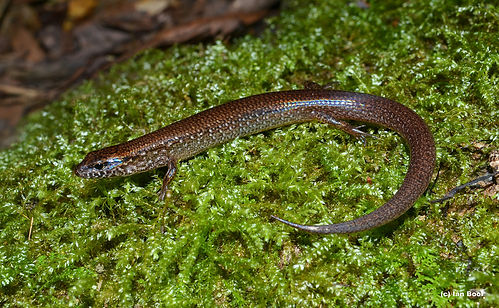
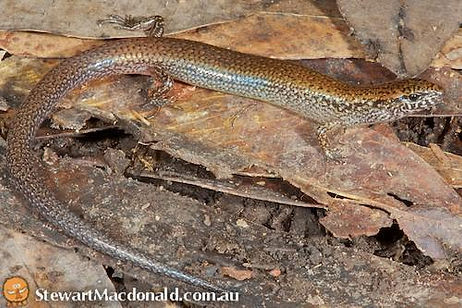

Other websites :
- reptile-database.reptarium.cz/species?genus=Calyptotis&species=ruficauda
- www.arod.com.au/arod/reptilia/Squamata/Scincidae/Calyptotis/ruficauda
Calyptotis ruficauda :
Calyptotis ruficauda is a species of lizards of the family of Scincidae
Distribution :
This species is endemic to New South Wales in Australia
Description :
Calyptotis ruficauda 2 measure up to 55 mm , not including the tail. This last measurement is 13 to 53% more than the length of the body. This species is characterized in particular by a tail of pink color coral more or less intense. Its ventral surface is pale yellow.
Calyptotis ruficauda
Classification according to ReptileDB:
ReignAnimalia
BranchChordata
Sub-embryo.Vertebrata
ClassReptilia
SubclassLepidosauria
OrderSquamata
Sub-OrderSauria
InfraorderScincomorpha
FamilyScincidae
SubfamilySphenomorphinae
KindCalyptotis
Binomial name:
Calyptotis ruficauda
Greer , 1983
It is likely that this species is oviparous , which suggests the presence of eggs with a thin shell in the belly of a pregnant female.
Etymology :
Its specific name, from Latin rufus , "red" and cauda , "tail", was given to him in reference to his livery
For the external links , refrences click here to read the full wikipedia article
From Wikipedia, the free encyclopedia
The Eastern striped skink (Ctenotus robustus) is a species of skink found in a wide variety of habitats in Australia. A robust lizard with complex markings and patterns. The snout to vent length is around 123 mm.
6- Caledoniscincus genus :
Caledoniscincus is a genus of lizards in the family Scincidae (skinks).
Species :
The following 14 species are recognized as being valid.
-
Caledoniscincus aquilonius Sadlier, Bauer & Colgan, 1999
-
Caledoniscincus atropunctatus (Roux, 1913)
-
Caledoniscincus auratus Sadlier, Bauer & Colgan, 1999
-
Caledoniscincus austrocaledonicus (Bavay, 1869)
-
Caledoniscincus chazeaui Sadlier, Bauer & Colgan, 1999
-
Caledoniscincus constellatus Sadlier, A. Whitaker, Wood & Bauer, 2012[4]
-
Caledoniscincus cryptos Sadlier, Bauer & Colgan, 1999
-
Caledoniscincus festivus (Roux, 1913)
-
Caledoniscincus haplorhinus (Günther, 1872)
-
Caledoniscincus notialis Sadlier, S.A. Smith, Bauer & Wood, 2013
-
Caledoniscincus orestes Sadlier, 1987
-
Caledoniscincus pelletieri Sadlier, T. Whitaker, Wood & Bauer, 2014
-
Caledoniscincus renevieri Sadlier, Bauer & Colgan, 1999
-
Caledoniscincus terma Sadlier, Bauer & Colgan, 1999
Examples :
This species still new and not available yet in the market
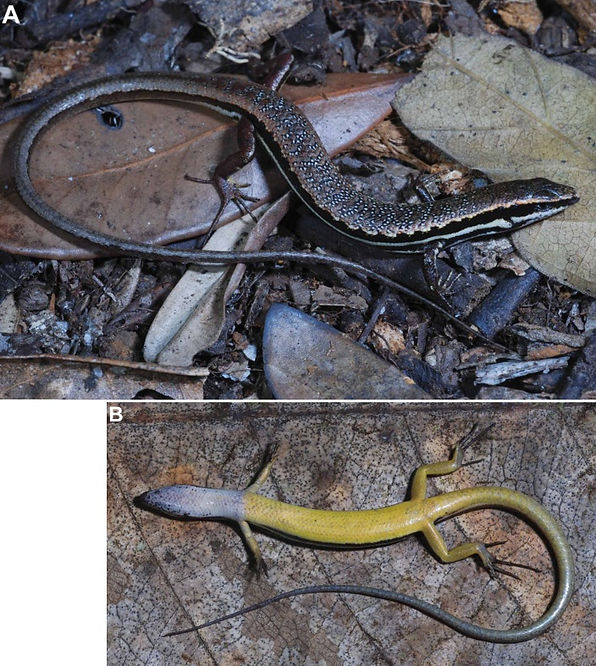
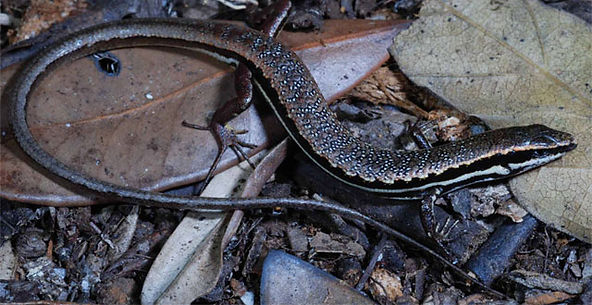
Caledoniscincus constellatus is a species of lizards of the family of Scincidae
Distribution :
This species is endemic to the northern province in New Caledonia 1 . It was found in acacia scrubland, at 400 m above sea level in the massive Ouazangou and the coast at Pointe Vavouto.
Description :
Males who are between 4.6 and 5.2 cm in length, are smaller than the females, which are up to 5.7 cm .
Both males and females have a bright yellow belly and a gray-brown dorsal surface with white spots, as well as two-color stripes in males and dark spots in females.
Etymology :
The specific name constellatus comes from the Latin constellatus , studded with reference to the white spots present on the backs of male 1 .
Caledoniscincus constellatus
Classification according to ReptileDB:
ReignAnimalia
BranchChordata
Sub-embryo.Vertebrata
ClassReptilia
SubclassLepidosauria
OrderSquamata
Sub-OrderSauria
InfraorderScincomorpha
FamilyScincidae
SubfamilyEugongylinae
KindCaledoniscincus
Binomial name:
Caledoniscincus constellatus
Sadlier , Whitaker , Wood & Bauer , 2012
For the external links , refrences click here to read the full wikipedia article
Other Websites :
- reptile-database.reptarium.cz/species?genus=Caledoniscincus&species=constellatus
- www.sci-news.com/biology/article00223.html
- Caledoniscincus atropunctatus :
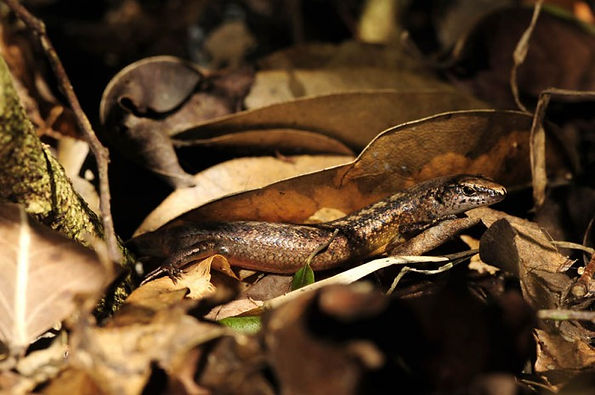
Caledoniscincus atropunctatus , the skink spotted litter , is a species of lizards of the family of Scincidae endemic to New Caledonia.
Caledoniscincus atropunctatus
Conservation status:
Least Concern (IUCN 3.1) [1]
Scientific classification:
Kingdom: Animalia
Phylum: Chordata
Class: Reptilia
Order: Squamata
Family: Scincidae
Genus: Caledoniscincus
Species: C. atropunctatus
Binomial name:
Caledoniscincus atropunctatus
(Roux, 1913)
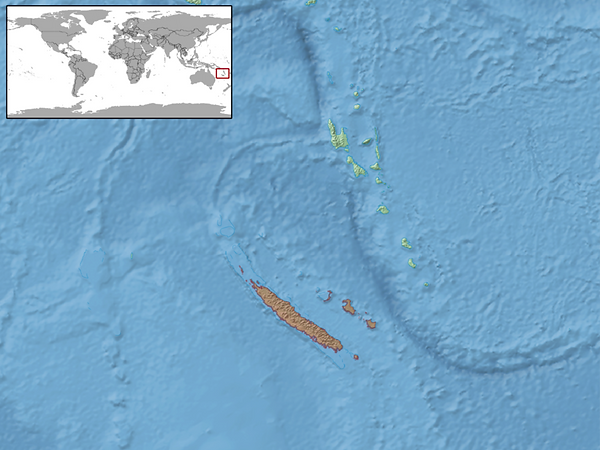

Distribution :
This species occurs 2 :
-
in Vanuatu ;
-
in New Caledonia in the islands of Grande Terre , in Lifou , of Maré , of Ouvea and des Pins and in the Belep islands .
Range of the species Caledoniscincus atropunctatus according to the IUCN (accessed 21 December 2012) .
For the external links , refrences click here to read the full wikipedia article
Other websites :
- www.iucnredlist.org/details/176175/0
- en.wikipedia.org/wiki/Caledoniscincus_atropunctatus
- reptile-database.reptarium.cz/species?genus
7- Anomalopus genus :
- Anomalopus swansoni
Anomalopus is the genus of worm-skinks, smallish smooth-scaled burrowing skinks (family Scincidae) from the eastern half of Australia. It belongs to a clade in the Sphenomorphus group which contains such genera as Ctenotus and the close relatives Eulamprus and Gnypetoscincus (Austin & Arnold 2006).
Species :
-
Anomalopus brevicollis Greer and Cogger, 1985 – short-necked worm-skink (NE Australia)
-
Anomalopus gowi Greer and Cogger, 1985 – speckled worm-skink (NE Australia)
-
Anomalopus leuckartii (Weinland, 1862) – two-clawed worm-skink (eastern Australia)
-
Anomalopus mackayi, Greer & Cogger, 1985 – five-clawed worm-skink (eastern Australia)
-
Anomalopus pluto Ingram, 1977 – Cape York worm-skink (NE Australia)
-
Anomalopus swansoni Greer and Cogger, 1985 – punctate worm-skink (east coastal Australia)
-
Anomalopus verreauxi A.M.C. Dumeril & A.H.A. Dumeril, 1851 – three-clawed worm-skink
Examples :
This species still new and not available yet in the market
Ctenotus is a genus of skinks (family Scincidae). It belongs to a clade in the Sphenomorphus group which contains such genera as Anomalopus and the close relatives Eulamprus and Gnypetoscincus.
These lizards are commonly called comb-eared skinks, a reference to the scales aligned near the ear.[3] They are able to move very quickly, disappearing whilst being observed. They are highly active in their habits, foraging amongst a diverse range of habitat.
The members of the genus are widely distributed, in all states of Australia, and are especially diverse in arid regions and the tropical north, accounting for 10–20% of the lizard species. Around a quarter of lizards found in one area of the Great Sandy Desert are Ctenotus skinks, 11 of the 40 species.[3] A single dune may have up to six species of Ctenotus. The Southwest Australian region contains 23 species. The size ranges from very small to moderately large, being similarly varied in body types from slender to stout.[4] The diversity of forms allows species to occupy different niches, often in the same locality.


From Wikipedia, the free encyclopedia
Anomalopus swansoni is a species of burrowing skink endemic to Australia.
Etymology :
The specific name, swansoni, is in honor of Australian herpetologist, Stephen Swanson.[2]
Geographic range :
A. swansoni is found between the Hawkesbury River and the Hunter River in eastern New South Wales.[1]
Description :
A. swansoni is pinkish-brown on top, with fine dark speckles, and a creamy-pink belly.[1]
Habitat & behavior :
A. swansoni shelters in soil, wood and rocks, and is rarely seen unless disturbed.[1]
Anomalopus swansoni
Scientific classification:
Kingdom:Animalia
Phylum:Chordata
Subphylum:Vertebrata
Class:Reptilia
Order:Squamata
Suborder:Sauria
Infraorder:Scincomorpha
Family:Scincidae
Subfamily:Lygosominae
Genus:Anomalopus
Species:A. swansoni
Binomial name:
Anomalopus swansoni
Greer & Cogger, 1985
For the external links , refrences click here to read the full wikipedia article
Other websites :
- reptile-database.reptarium.cz/species?genus=Anomalopus&species=swansoni
- fr.wikipedia.org/wiki/Anomalopus_swansoni
- Anomalopus verreauxii :
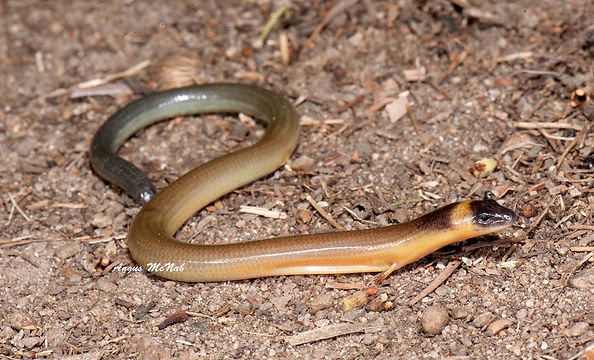
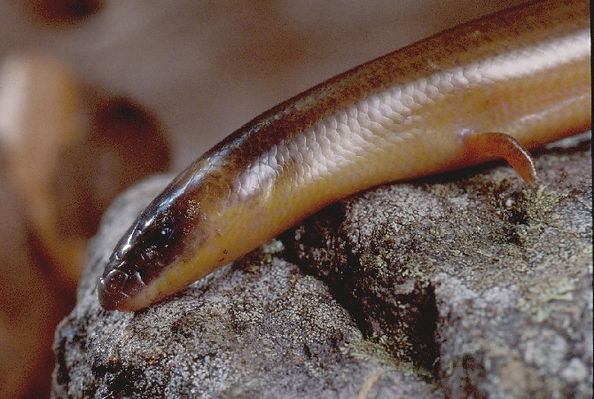
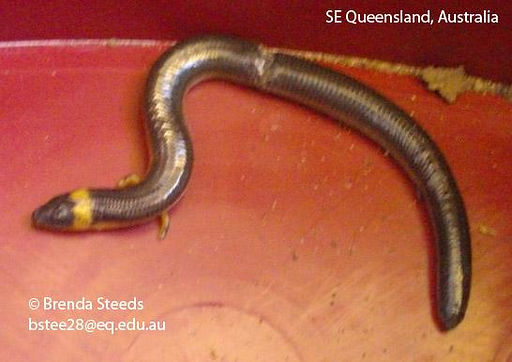

Other Websites :
- file:///C:/Users/EYAD/Downloads/fact-sheet-verreaux-skink.pdf
( Copy and paste the Link above )
- reptile-database.reptarium.cz/species?genus=Anomalopus&species=verreauxii&search_param=()
- www.arod.com.au/arod/reptilia/Squamata/Scincidae/Anomalopus/verreauxii
8- Ctenotus genus :
From Wikipedia, the free encyclopedia
The Lancelin Island Skink (Ctenotus lancelini ) is a species of skink in the family Scincidae. The species is found only in Australia.
Ctenotus
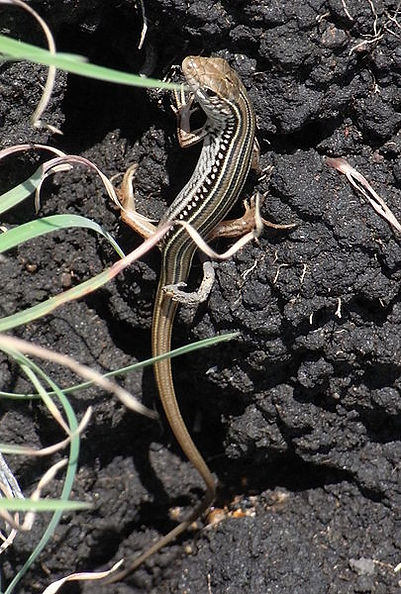
Ctenotus robustus, robust striped skink
-
Ctenotus agrestis
-
Ctenotus alacer
-
Ctenotus alleni
-
Ctenotus allotropis
-
Ctenotus angusticeps
-
Ctenotus aphrodite
-
Ctenotus arcanus
-
Ctenotus ariadnae
-
Ctenotus arnhemensis
-
Ctenotus astarte
-
Ctenotus astictus
-
Ctenotus atlas
-
Ctenotus australis – western limestone ctenotus
-
Ctenotus borealis
-
Ctenotus brachyonyx
-
Ctenotus brooksi
-
Ctenotus burbidgei
-
Ctenotus calurus
-
Ctenotus capricorni
-
Ctenotus catenifer
-
Ctenotus coggeri
-
Ctenotus colletti
-
Ctenotus decaneurus
-
Ctenotus delli
-
Ctenotus dux
-
Ctenotus ehmanni
-
Ctenotus essingtonii
-
Ctenotus eurydice
-
Ctenotus eutaenius
-
Ctenotus fallens
-
Ctenotus gagudju
-
Ctenotus gemmula
-
Ctenotus grandis
-
Ctenotus greeri
-
Ctenotus hanloni
-
Ctenotus hebetior
-
Ctenotus helenae
-
Ctenotus hilli
-
Ctenotus iapetus
-
Ctenotus impar
-
Ctenotus ingrami
-
Ctenotus inornatus
-
Ctenotus joanae
-
Ctenotus kurnbudj
-
Ctenotus labillardieri
-
Ctenotus lancelini – Lancelin Island skink
-
Ctenotus lateralis
-
Ctenotus leae
-
Ctenotus leonhardii
-
Ctenotus maryani
-
Ctenotus mastigura
-
Ctenotus militaris
-
Ctenotus mimetes
-
Ctenotus monticola
-
Ctenotus nasutus
-
Ctenotus nigrilineatus
-
Ctenotus nullum
-
Ctenotus olympicus
-
Ctenotus ora – coastal plains skink
-
Ctenotus pallescens
-
Ctenotus pantherinus
-
Ctenotus piankai
-
Ctenotus pulchellus
-
Ctenotus quattuordecimlineatus
-
Ctenotus quinkan
-
Ctenotus quirinus
-
Ctenotus rawlinsoni
-
Ctenotus regius
-
Ctenotus rimacolus
-
Ctenotus robustus
-
Ctenotus rosarium
-
Ctenotus rubicundus
-
Ctenotus rufescens
-
Ctenotus rutilans
-
Ctenotus saxatilis
-
Ctenotus schevilli
-
Ctenotus schomburgkii
-
Ctenotus septenarius
-
Ctenotus serotinus
-
Ctenotus serventyi
-
Ctenotus severus
-
Ctenotus spaldingi
-
Ctenotus storri
-
Ctenotus strauchii
-
Ctenotus striaticeps
-
Ctenotus stuarti
-
Ctenotus taeniolatus – copper-tailed skink
-
Ctenotus tanamiensis
-
Ctenotus tantillus
-
Ctenotus terrareginae
-
Ctenotus uber
-
Ctenotus vertebralis
-
Ctenotus xenopleura
-
Ctenotus youngsoni
-
Ctenotus zastictus – Hamelin ctenotus
-
Ctenotus zebrilla
Scientific classification
Kingdom:Animalia
Phylum:Chordata
Subphylum:Vertebrata
Class:Reptilia (paraphyletic)
(unranked):Sauria
Order:Squamata(paraphyletic)
Suborder:Lacertilia
Infraorder:Scincomorpha
Family:Scincidae
Subfamily:Lygosominae
Genus:Ctenotus
Storr, 1964[1]
Species
97, see list
For the external links , refrences click here to read the full wikipedia article
Species
Ctenotus is the most diverse reptile genus in Australia, approaching 100 member species. Identification to the rank of species is regarded as difficult, and the largest lizard genus is also one of the most poorly understood
Robust Striped Skink sun-bathing
- The Western limestone ctenotus (Ctenotus australis)
For the external links , refrences click here to read the full wikipedia article

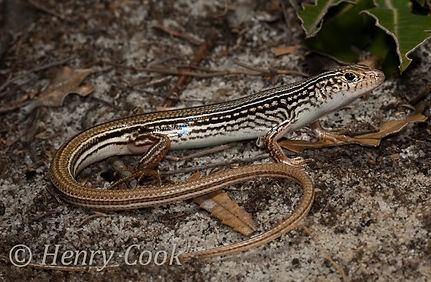


From Wikipedia, the free encyclopedia
The Australian striped skink, also known as the Copper-tailed ctenotus or Copper-tailed skink,[1] (Ctenotus taeniolatus) is a species of medium-sized skink found commonly along the eastern seaboard of Australia and throughout the country generally. Striped skinks are found in open bushland and heathland. They can grow to be 30 cm long.
Striped skinks are olive brown on top with stripes of dark brown and white running from head to tail. They have a black, white edged vertebral band and a white dorsolateral band edged in black. The sides are dark brown and spotted with white.
Like most skinks, they eat mainly small invertebrates like insects and worms. They live in rocky and sandy environs, seeking sunny basking spots with cover nearby so they can dart away from predators.
From Wikipedia, the free encyclopedia
The Western limestone ctenotus (Ctenotus australis) is a species of skink native to coastal areas of south west Western Australia. It is found amongst heath on coastal dunes, and in open woodland on the Swan Coastal Plain. It is generally restricted to areas with limestone.[1]
It is quite large for a ctenotus. It is a light brown colour, but over this is a complex, prominent pattern of black, white and brown stripes.
Western limestone ctenotus
Scientific classification:
Kingdom:Animalia
Phylum:Chordata
Class:Reptilia(paraphyletic)
Order:Squamata(paraphyletic)
Suborder:Lacertilia
Family:Scincidae
Genus:Ctenotus
Species:C. australis
Binomial name:
Ctenotus australis
(J.E.Grey, 1838)
Synonyms:
Tiliqua australis
Lygosoma lesueurii
References:
-^ Jump up to:a b Bush, Brian; Maryan, Brad; Browne-Cooper, Robert; Robinson, David (1995). A guide to the reptiles and frogs of the Perth region. University of Western Australia Press. ISBN 1-875560-42-4.
Other websites :
- reptile-database.reptarium.cz/species?genus=Ctenotus&species=australis
- bie.ala.org.au/species/urn:lsid:biodiversity.org.au:afd.taxon:489b8a57-ce82-4505-a0ea-3ee878f0c514
- The Lancelin Island Skink (Ctenotus lancelini ):


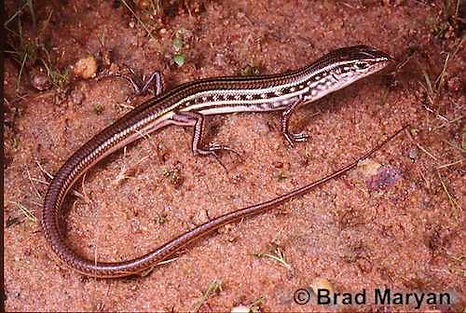
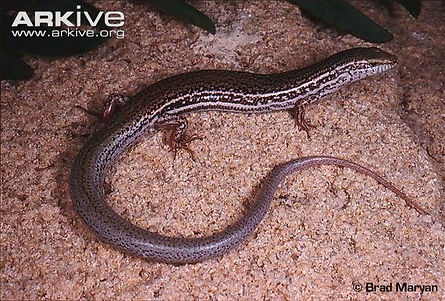
Lancelin Island Skink
Conservation status
Vulnerable (IUCN 2.3)
Scientific classification
Kingdom:Animalia
Phylum:Chordata
Subphylum:Vertebrata
Class:Reptilia
Order:Squamata
Suborder:Sauria
Infraorder:Scincomorpha
Family:Scincidae
Subfamily:Sphenomorphinae[1]
Genus:Ctenotus
Species:C. lancelini
Binomial name
Ctenotus lancelini
Ford, 1969
Synonyms
-
Ctenotus labillardieri lanceliniFord, 1969
-
Ctenotus lancelini— Cogger, 1983[1]

For the external links , refrences click here to read the full wikipedia article
Other websites :
- www.iucnredlist.org/details/5861/0
- reptile-database.reptarium.cz/species?genus=Ctenotus&species=lancelini
- www.environment.gov.au/cgi-bin/sprat/public/publicspecies.pl?taxon_id=1482
- The Eastern striped skink (Ctenotus robustus) :





Eastern striped skink
Scientific classification:
Kingdom:Animalia
Phylum:Chordata
Class:Reptilia (paraphyletic)
Order:Squamata (paraphyletic)
Suborder:Lacertilia
Family:Scincidae
Genus:Ctenotus
Species:C. robustus
Binomial name:
Ctenotus robustus
Storr 1970[1]
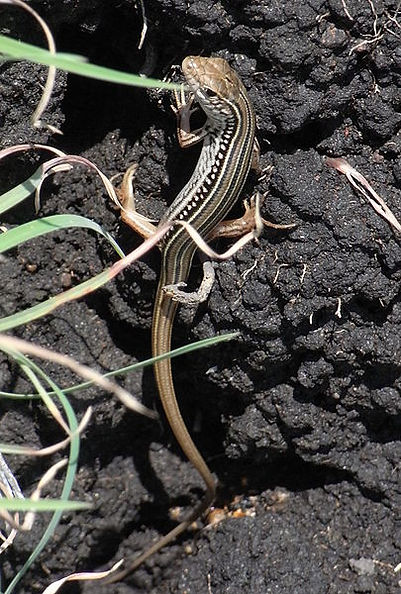
Other websites :
- www.arod.com.au/arod/reptilia/Squamata/Scincidae/Ctenotus/robustus
- reptile-database.reptarium.cz/species?genus=Ctenotus&species=robustus
- The Australian striped skink, also known as the Copper-tailed ctenotus or Copper-tailed skink :
Video :
STRIPED SKINK Ctenotus robustus
Robust Striped Skink sun-bathing
Eastern Striped Skinks by Austin Stevens







Scientific classification :
Kingdom:Animalia
Phylum:Chordata
Class:Reptilia
Order:Squamata
Suborder:Sauria
Family:Scincidae
Genus:Ctenotus
Species:C. taeniolatus
Binomial name:
Ctenotus taeniolatus
(White, 1790)
Copper-tailed ctenotus or
Copper-tailed skink
For the external links , refrences click here to read the full wikipedia article
Other websites :
- reptile-database.reptarium.cz/species?genus=Ctenotus&species=taeniolatus
- www.arod.com.au/arod/reptilia/Squamata/Scincidae/Ctenotus/taeniolatus
- canberranaturemap.org/Community/Species/11723
- reptilesofaustralia.com/lizards/skinks/ctaeniolatus.htm#.WHIlbRt97IU
- The Hamelin ctenotus (Ctenotus zastictus) :


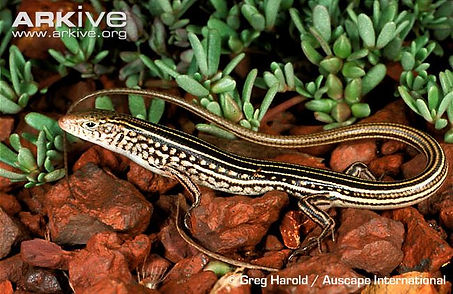

From Wikipedia, the free encyclopedia
The Hamelin ctenotus (Ctenotus zastictus) is a species of skink in the Scincidae family. It is found only in Australia.
Sources :
-Australasian Reptile & Amphibian Specialist Group 1996. Ctenotus zastictus. 2006 IUCN Red List of Threatened Species.Downloaded on 20 July 2007.
Hamelin ctenotus
Conservation status:
Vulnerable (IUCN 2.3)
Scientific classification:
Kingdom:Animalia
Phylum:Chordata
Class:Reptilia
Order:Squamata
Family:Scincidae
Genus:Ctenotus
Species:C. zastictus
Binomial name:
Ctenotus zastictus
Storr, 1984

Other websites :
- reptile-database.reptarium.cz/species?genus=Ctenotus&species=zastictus
- www.environment.gov.au/cgi-bin/sprat/public/publicspecies.pl?taxon_id=25570
Please select or follow below :
SKINKS SPECIES : Blue - tongued skinks : Part 1 - 2 - 3 - 4 - 5 - 6 - 7
Five - Lined Skinks : Part 1 - 2
Other Skinks : ASIAN & AFRICAN skinks : Part 1 2 3 4 5 6 7 8 9 10 11 12 13 14 15
Other Skinks American Part : 1 - 2 - 3
Other Skinks Australian Part : 1 2 3 4 5 6 7 8 9 10 11 12 13 14
Please select or follow below :
SKINKS SPECIES : Blue - tongued skinks : Part 1 - 2 - 3 - 4 - 5 - 6 - 7
Five - Lined Skinks : Part 1 - 2
Other Skinks : ASIAN & AFRICAN skinks : Part 1 2 3 4 5 6 7 8 9 10 11 12 13 14 15
Other Skinks American Part : 1 - 2 - 3
Other Skinks Australian Part : 1 2 3 4 5 6 7 8 9 10 11 12 13 14